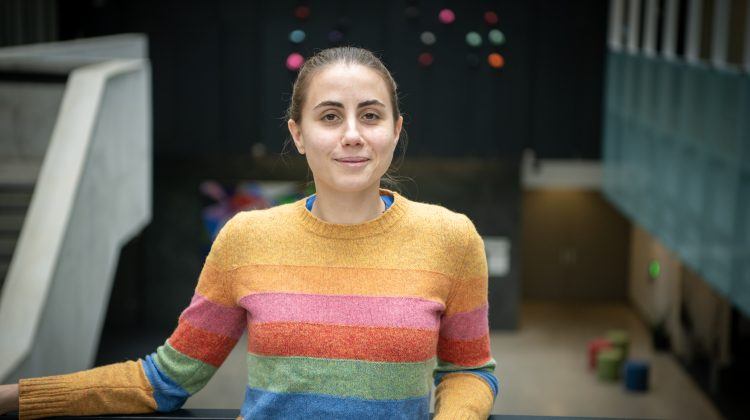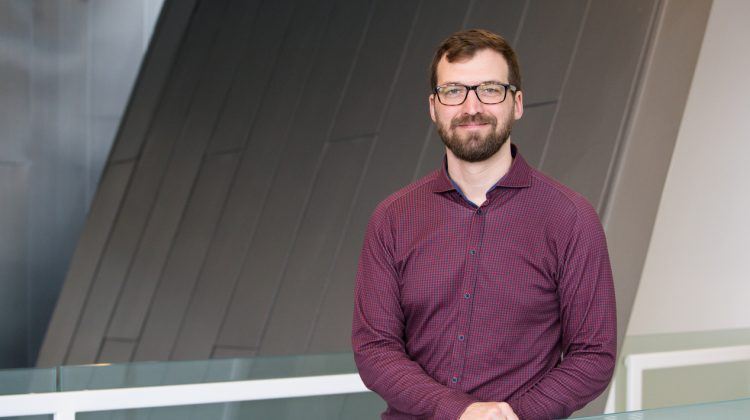A mirror universe might tell a simpler story: Neil Turok
Dark matter and other key properties of the cosmos could be explained by a new theory describing the big bang as a mirror at the beginning of spacetime, says Perimeter’s Director Emeritus
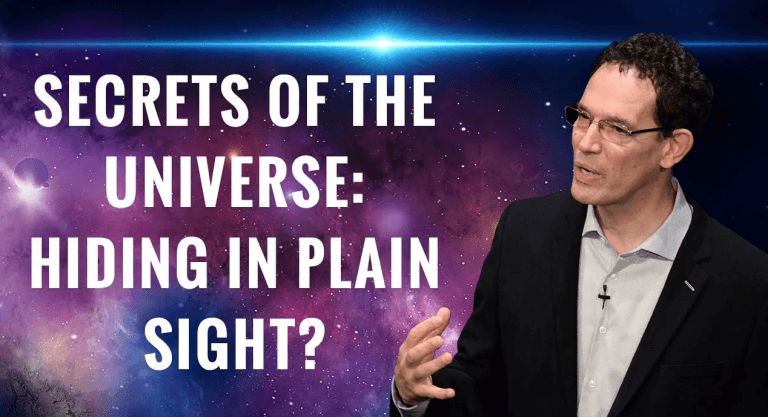
Neil Turok was frustrated. Over the decades, physicists had developed numerous models to explain the birth of the universe. There was the big bang model. The big bang plus inflation. Models of universes with extra dimensions and new particles and forces. Multiverses. Even Turok’s own cyclical universe model, which he has now abandoned.
None of them seemed quite right.
They all needed embellishments like inflation to make them fit the universe we see around us.
These complications seemed, to Turok, to stand in sharp contrast with the data gathered so far. Giant microscopes and telescopes used to probe the universe on subatomic and cosmic scales have not yet yielded signals of any new particles or forces. Instead, they point to a highly economical description of the universe and its basic laws.
Turok wondered whether a new perspective might explain dark matter, the stuff that clumps galaxies together, and the cosmological constant (or “dark energy”) that pushes the universe apart.
Perhaps what was needed was just a new way of looking at things.
“It seems that nature has worked out a simpler way of being consistent than theorists had anticipated,” Turok says.
That thought attracted him and his collaborator, Latham Boyle, to a new idea: the mirror universe.
“It’s an approach that was born out of a certain sense of frustration with previous approaches. In my view, they had all become rather complicated and contrived, including my own approaches,” Turok said during a recent Perimeter Public Lecture titled, “Secrets of the Universe: Hiding in Plain Sight?”
Turok served as Perimeter’s Director from 2008 to 2018 and now holds the Higgs Chair of Theoretical Physics at the University of Edinburgh. He also holds the Carlo Fidani Roger Penrose Distinguished Visiting Research Chair at Perimeter, a role that brings him back to the Institute regularly for conferences, collaborations, and public events like the recent lecture.
Boyle and Turok began to develop the mirror universe idea when both were faculty members at Perimeter. Boyle recently joined Turok at the University of Edinburgh while continuing his association with Perimeter as a visiting fellow.
Together with their collaborators, they have co-authored a number of papers outlining their new theory of the universe, including “The Big Bang as a Mirror: a Solution of the Strong CP Problem” (preprint), “A Minimal Explanation of the Primordial Cosmological Perturbations” (preprint), and “CPT-Symmetric Universe,” which was published in Physical Review Letters.
During his public lecture, Turok showed the audience an image of the famous fresco, The School of Athens, painted by the Italian Renaissance artist Raphael in the early 1500s. It depicts a congregation of philosophers, mathematicians, and scientists from Ancient Greece. In it, we see, to one side, the figure of Anaximander looking over the shoulder of Pythagoras and scribbling notes as Pythagoras works out his mathematical theorems. Turok thinks they were on to something.
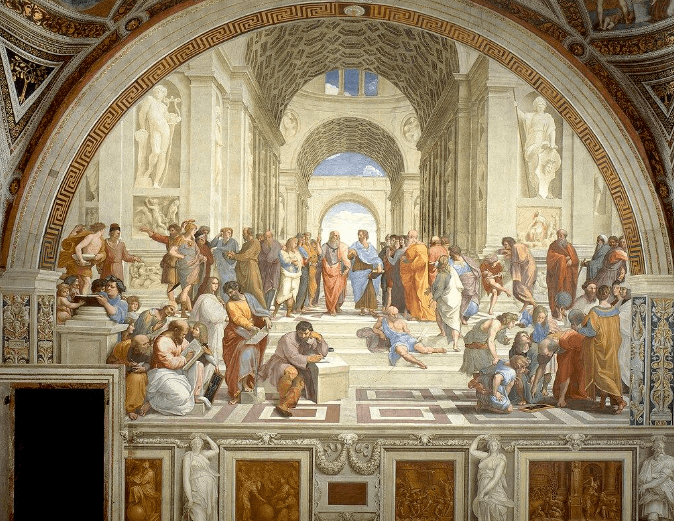
“The universe is literally telling us its laws,” Turok says. “We have to look at the incredible array of data we now have, figure out which parts of that data are telling us something fundamental, and learn how to correctly interpret them.”
The mirror universe idea is inherently simple, Turok says. It evokes a geometrically symmetrical universe that one can imagine looking like an hourglass on its side. On the right is a universe flowing forward in time; on the left, a universe flowing backward in time. In the middle is the singularity, where the wavelength of the radiation in the universe becomes smaller than the unimaginably tiny Planck length, about 10−20 times the diameter of a proton.
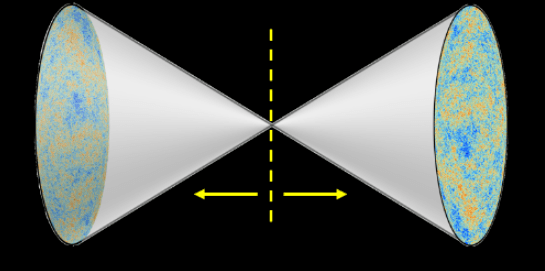
But no, sorry, it wouldn’t be like the mirror universe in Star Trek. No one can transport to the other side to meet the mirror versions of Kirk and Spock with opposite personalities from their counterparts.
“I think of it more as a sort of mathematical device to do something sensible with the singularity. You have a picture of an extended spacetime and impose a symmetry on it, so you can flip it around,” Turok explains.
In this model, the universe respects a specific kind of symmetry known as CPT. CPT stands for charge (C), parity (P), and time reversal (T). CPT symmetry means particle interactions should look the same if you flip the charges, look at their mirror image, and run the interactions backward in time. By applying CPT symmetry to the entire universe, centered on the singularity, Turok thinks a number of cosmological problems solve themselves, including the nature of dark matter.
Dark matter is the name given to the ghostly something that must exist in great abundance to produce the extra gravitational pull that seems to be holding galaxies and galaxy clusters together. Yet it doesn’t interact with ordinary light or matter. The effects can only be seen in the gravitational interactions.
What is causing it? Turok thinks the mirror universe approach makes viable the simplest-yet solution, in which the dark matter consists of heavy right-handed neutrinos, such as are needed, in any case, to explain the small masses of the light neutrinos seen in experiments.
We know of three types of neutrinos: the electron-neutrino, muon-neutrino, and tau-neutrino. But these are all “left-handed,” and they are too light, their masses too small, to be the dark matter. However, other types of particles come in both left-handed and right-handed versions: they “spin” in both directions. Could the light left-handed neutrinos have heavy right-handed partners? The mirror universe model says yes.
Turok says heavy right-handed neutrinos would naturally be generated in great abundance if you start with a mirror universe model that respects CPT symmetry. Two of them would explain the mass differences already seen in the light neutrinos. The third could be stable and would naturally comprise the dark matter.
This theory will be testable in the near future, Turok says, with galaxy surveys now being made by the Euclid satellite and the Large Synoptic Survey Telescope (LSST) now known as the Vera C. Rubin Observatory. If these tests pan out, “this becomes easily the most convincing theory of dark matter, in my view,” Turok says.
The mirror universe, with heavy right-handed neutrinos, also solves another problem with the big bang theory – namely, how do we exist at all? According to the big bang theory and with only left-handed neutrinos, very nearly the same amount of matter as antimatter should have been present at the beginning of the universe. When matter and antimatter collide, they annihilate each other. So then, the question is: Why is our universe full of matter? Where did the antimatter go?
If you employ a mirror universe running in the opposite direction, you get a simple solution to where most of the antimatter went, into the partner universe running opposite to our own.
Moreover, the mirror universe idea solves these problems without inflation.
Inflation describes a universe that suddenly inflated at birth from something smaller than a DNA molecule to something trillions of kilometres in size, in a fraction of an instant.
That sounds fantastical, but inflation was widely accepted because it offered a solution to some of the problems with the original big bang theory. One problem was that the universe we see today has a nearly uniform temperature across the sky. But how would that be possible if the universe didn’t start out at one point and inflate rapidly?
Inflation also claims to solve the “flatness problem” – namely, why space is not curved on the largest scales we observe. The shape and history of the universe depend on this curvature. If the density is more than a certain critical value, the universe would be positively curved like a sphere, and would re-collapse. If it is less than the critical value, on the other hand, it would be negatively curved like a saddle. It would then spread out much faster and become devoid of matter.
Thankfully, we live in the “Goldilocks and the Three Bears” story. The density of our universe is “just right,” and space is nearly flat. Inflation explains this because if you start with a small dense region and then it balloons out suddenly, the space will become nearly flat, even if it started out curved.
Boyle and Turok discovered that the mirror universe provides a completely different solution to the flatness puzzle.
Stephen Hawking, the inaugural Distinguished Visiting Research Chair at Perimeter, developed the notion of “gravitational entropy” in the context of black holes. Entropy describes the number of ways a system can be arranged, while possessing the same broad properties. For example, the entropy of a black hole tells you about how many ways it could have been made, given its mass, spin, and charge.
Boyle and Turok found their new approach allowed them to extend Hawking’s method and calculate the gravitational entropy of the cosmos, given its broad properties including the curvature of space, the cosmological constant, the total mass, and the total entropy in radiation.
To their amazement, they found the gravitational entropy is greatest for universes which are spatially flat, with nearly uniform radiation and matter. Therefore, a smoothing and flattening process like inflation is no longer needed: the broad properties of the universe are the way they are just because there are many more smooth, flat universes than curved, lumpy ones. Furthermore, they found the gravitational entropy favours a small, positive cosmological constant, just as we observe. In this respect, the mirror universe explanation does better than inflation.
In any case, Turok says, the case for inflation is steadily becoming weaker. The smoking gun signal of inflation – long wavelength gravitational waves – has not been seen. “The simplest pictures of inflation are under increasing pressure from the observations,” he explained in a recent interview. But the mirror universe approach can solve the same problems without the need for inflation, he adds.
As a careful scientist, Turok cautions that this mirror universe model could turn out to be wrong. “I must warn you in advance that it could be that these ideas could fall apart tomorrow. Somebody here [at Perimeter] may point out some serious flaw, and the whole theory will fall flat on its face.” If that happens, so be it, he adds: “Good scientific theories are testable, either through logical argument, or through measurements.”






















































































